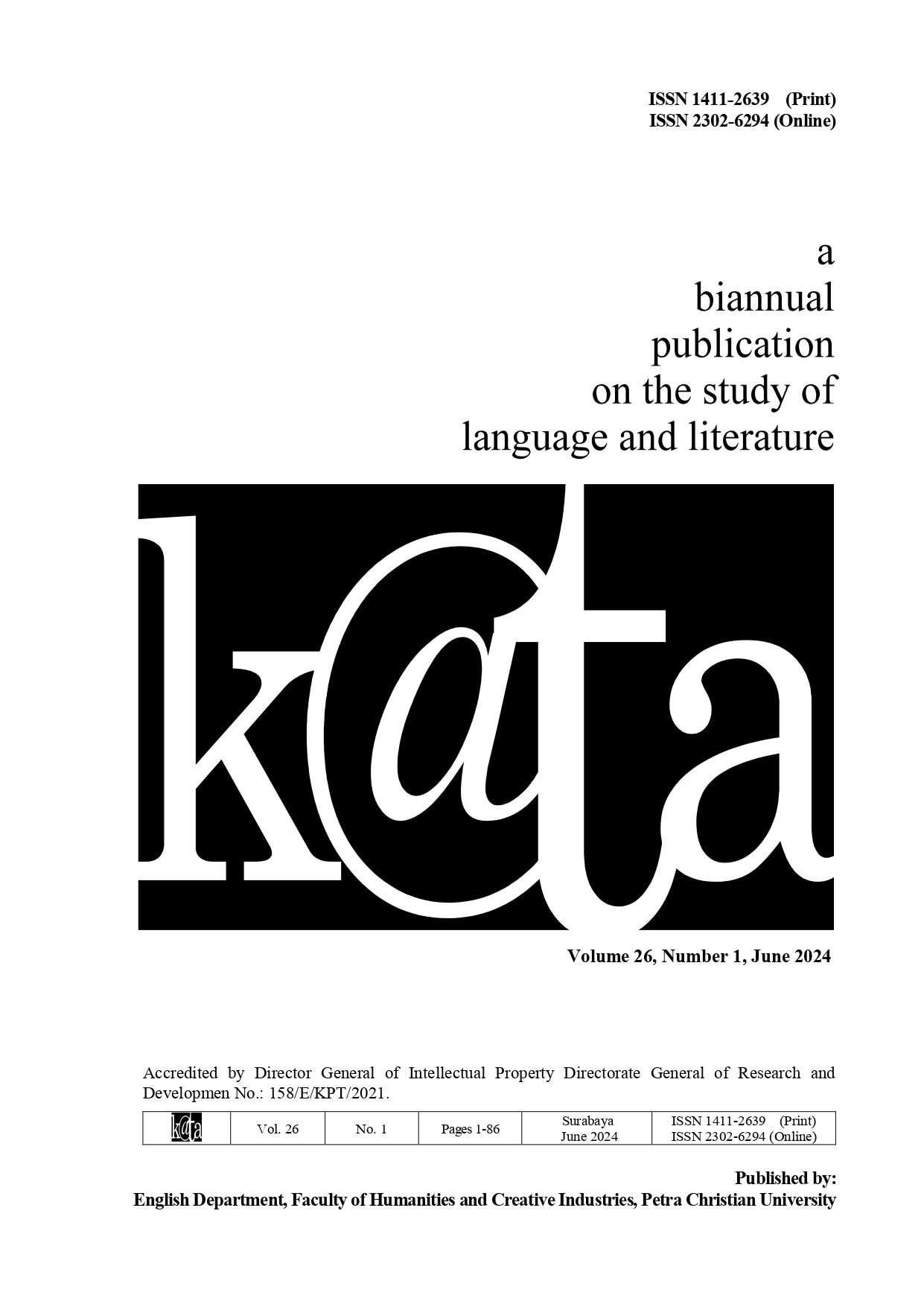Translation Criticism: Implementation of House’s TQA Model on “Sweet Hour of Prayer†into Indonesian
Abstract
The article examined the quality of the translation of the hymn “Sweet Hour of Prayer†(1845) into the Indonesian lyric “Inilah Jam Ku Berdoaâ€. The study used a qualitative method with an inductive orientation. The primary data were collected from the American Seventh-day Adventist Hymnal (1985) and the Indonesian hymnal Lagu Sion (2013). The secondary data were obtained from books and articles about Translation Quality Assessment (TQA), systemic functional linguistics, and SDA hymnody. House’s TQA model was implemented by assessing overt and covert translation errors and by analyzing the profiles of the source and target texts. It was found that the textual profile and function of the target text (TT) do not match those of the source text (ST). Furthermore, it was discovered that the translation of “Sweet Hour of Prayer†from English to Indonesian was not adequate in quality due to manipulations that reduced the lyric to a covert version.
Downloads
References
Alavipour, T., & Noroozi, I. (2020). The quality assessment of the Persian translation of the “Graveyard†is based on House’s translation quality assessment model. Language and Translation, 10(1), 27–36.
Arrington, A. (2021). “Translated†or “transformedâ€: The use of western hymns in the evangelization of the Lisu of Southwest China. Religions, 12(9), 772. https://doi.org/10.3390/rel12090772
Bethke, A. (2017). The transforming idioms of South African hymn tunes: Diminishing residues of colonial harmonic systems and the reinterpretation of hymn tunes. Muziki, 14(1), 7–25. https://doi.org/10.1080/18125980.2017.1322472
Drugan, J. (2013). Quality in professional translation: Assessment and improvement. Bloomsbury Publishing.
Fattah, A., & Yahiaoui, R. (2022). Systemic functional linguistics. In F. Zanettin & C. Rundle (Eds.), The Routledge handbook of translation and methodology (pp. 190–206). Routledge.
Hanna, S. (2019). When Jesus speaks colloquial Egyptian Arabic: An incarnational understanding of translation. Religion, 49(3), 364–387. https://doi.org/10.1080/0048721X.2019.1622841
Hostetler, L. (1949). Handbook to the Mennonite hymnary. Mennonite Board of Publications.
House, J. (2014). Translation quality assessment: Past and present. In J. House (Ed.), Translation: A multidisciplinary approach (pp. 241–264). Palgrave Macmillan.
House, J. (2015). Translation quality assessment: Past and present. Routledge.
House, J. (2018). Translation: The basics. Routledge.
Kamalizad, J., & Khaksar, M. (2018). Translation quality assessment of Harry Potter and the Cursed Child according to House’s TQA model. DJ Journal of English Language and Literature, 3(2), 11–18. https://doi.org/10.18831/djeng.org/2018021002
Kembuan, M. Y. T. (2018). Makna eskatologi dalam Seventh-day Adventist Hymnal: Analisis semiotika. Jurnal Elekronik Fakultas Sastra Universitas SAM Ratulangi, 3(1). https://ejournal.unsrat.ac.id
Kim, W. (2019). Translations in Korea: Theory and practice. Palgrave Macmillan.
Kloppers, E. (2017). Hymns across the water, translated and relocated: The reception of Scottish hymns in translation. HTS Teologiese Studies / Theological Studies, 73(2), 4500. https://doi.org/10.4102/hts.v73i2.4500
Lachenal, C. (2020). The development of a distinctive Seventh-day Adventist hymnody. Adventist International Institute of Advanced Studies (pp. 1841–1188). https://dspace.aiias.edu/xmlui/handle/20.500.12977/429
Lumowa, M., & Melope, C. (2015). Lagu Sion, edisi lengkap. Play Store.
Monteiro, M. (2022). Singing the “wondrous story†in Portuguese: The first official Brazilian Baptist hymnal, Cantor Cristão in Portuguese. Religions, 13(1), 18. https://doi.org/10.3390/rel13010018
Naidj, S., & Motahari, M. S. (2019). Translation quality assessment in the literary text based on House model. Journal of Humanities and Social Sciences Studies, 1(2), 19–27.
Nanasi, E. G. (2020). Congregational hymn-singing at the Weimar Seventh-day Adventist church: A case study [Unpublished doctoral dissertation]. Liberty University.
Nida, E. A. (2001). Contexts in translating. John Benjamins Publishing Company.
Nix, J. R. (2000). Early advent singing. Review and Herald Publishing Association.
Owoaje, T., & Adegbola, T. (2022). Song melody and speech tone conflict in translated Yorùbá Christian hymns. Yoruba Studies Review, 7(1), 1–18. https://doi.org/10.32473/ysr.v7i1.131447
Stallsmith, G. (2021). Protestant congregational song in the Philippines: Localization through translation and hybridization. Religions, 12(9), 708. https://doi.org/10.3390/rel12090708
Steuernagel, M. S. (2021). Transnational and translational aspects of global Christian congregational musicking. Religions, 12(9), 732. https://doi.org/10.3390/rel12090732
Suharto, S., & Subroto, E. (2014). The equivalence of translated song lyrics and their effects: The case of translated ecclesial songs. Humaniora, 14(2), 131–139. https://doi.org/10.15294/harmonia.v14i2
Thornton, D. (2021). A “sloppy wet kiss� Intralingual translation and meaning-making in contemporary congregational songs. Religions, 12(10), 874. https://doi.org/10.3390/rel12100874
Walford, W. W. (1985). Sweet hour of prayer. Seventh-day Adventist church hymnal, 478. https://adventisthymns.com/lyrics/478-sweet-hour-of-prayer
Youssef, S. S. (2023). Feasibility of using House’ TQA model in self-revision in English-Arabic non-literary translation: An empirical study. International Journal of Arabic-English Studies. https://doi.org/10.33806/ijaes.v24i1.546

This work is licensed under a Creative Commons Attribution 4.0 International License.
![]() This work is licensed under a Creative Commons Attribution License
This work is licensed under a Creative Commons Attribution License




.png)
.png)

.png)












